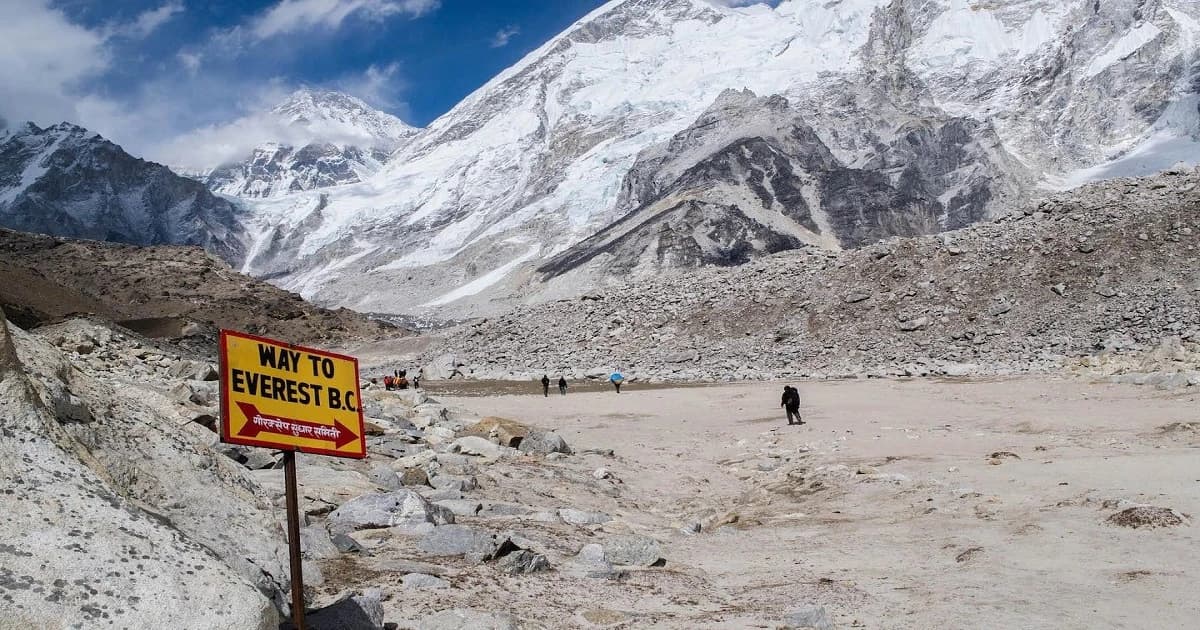The Everest Base Camp trek is one of the most iconic trekking adventures in the world. Nestled in the heart of Everest region, this classic adventure takes you to the base of Mt. Everest, the tallest mountain in the planet. Thousands of trekkers from around the globe set their foot on this trek every year. In this comprehensive guide, we’ll cover everything you need to know about trekking to the Everest Base Camp, including the best time to go, trek difficulty, itinerary, permits, preparation tips, and more.
Why Choose the Everest Base Camp Trekking?
The Everest Base Camp (EBC) Trekking offers spectacular views of towering peaks like Lhotse, Nuptse, Ama Dablam, and of course, Everest itself. Along the trail, trekkers experience rich Sherpa culture, visit ancient monasteries, and pass through picturesque villages such as Namche Bazaar, Tengboche, Dingboche and Gorakshep.
This trek is not just about reaching base camp; it is the journey of a lifetime. From suspension bridges over deep gorges to the bustling markets of Namche, the trek provides a perfect blend of natural beauty, cultural richness, and majestic experience of the mountains.
What is the Best Time for Everest Base Camp Trekking?
Choosing the best time for trekking to Everest Base Camp is crucial for a safe and enjoyable adventure. There are two main trekking seasons that provide the best trekking experience:
- Spring (March to May): This is the most popular season for trekking to the Everest base camp. You can expect clear skies, moderate temperatures, and vibrant rhododendron blooms along the trail. This time of the year provides one of the best trekking experiences in the mountains.
- Autumn (September to November): This season offers stable weather, excellent visibility, and crisp mountain air, making it ideal for trekking. It is another perfect time for the trekking adventure to the base camp.
Avoid the monsoon season (June to August) since we get heavy rainfall making the trail slippery and possible flooding and landslides. Winter treks (December to February) are possible but come with freezing temperatures and snow-covered trails. So, these two seasons are less ideal with extreme weather conditions.
Everest Base Camp Trekking Difficulty
The Everest Base Camp trekking difficulty is considered moderate to challenging. While you don’t need technical climbing skills, you should be in good physical condition. The trek involves:
- Daily hikes of 5-7 hours
- Altitude gain up to 5,545 meters
- Risk of altitude sickness
- Proper acclimatization and a steady pace are vital for a successful trek
Typical Everest Base Camp Trekking Itinerary
Here’s a standard 12-day trekking only itinerary to the Everest Base Camp.
- Flight from Kathmandu to Lukla, trek to Phakding (2,610m)
- Phakding to Namche Bazaar (3,440m)
- Acclimatization day at Namche Bazaar
- Namche to Tengboche (3,860m)
- Tengboche to Dingboche (4,410m)
- Acclimatization day at Dingboche
- Dingboche to Lobuche (4,940m)
- Lobuche to Gorakshep (5,170m), hike to Everest Base Camp (5,364m)
- Hike to Kala Patthar (5,545m) for sunrise view, return to Pheriche
- Pheriche to Namche Bazaar
- Namche to Lukla
- Flight back to Kathmandu
Required Permits for Everest Base Camp Trek
To trek to Everest Base Camp, you’ll need the following permits:
- Sagarmatha National Park Entry Permit
- Khumbu Pasang Lhamu Rural Municipality Permit
When you are trekking with us, you do not need to worry about buying permit yourself. We arrange all the necessary permits for your trekking adventure.
How to Prepare for the Everest Base Camp Trek?
- Physical Fitness: Start training at least 2-3 months before your trek. Focus on cardio, endurance, and leg strength. Regular hiking, running, and stair climbing with a backpack will help.
- Gear and Packing List: Proper gear plays an important role to make your trek enjoyable. Here are a few essential items that you should pack:
- Sturdy trekking boots
- Thermal base layers
- Down jacket
- Sleeping bag (rated -10°C or lower)
- Trekking poles
- Sunglasses, gloves, hat
- Personal medical kit
We will send you a detailed packing list for the trip once you decide to trek with us.
Acclimatization and Hydration
Spend time at higher altitudes before pushing further. Drink plenty of water, and avoid alcohol. Be aware of acute mountain sickness (AMS) symptoms: headache, nausea, dizziness.
Accommodation and Food on the Trek
You’ll stay in basic accommodation called tea houses during the trek - basic lodges with shared rooms and common dining areas. You can find a variety of foods along the trail including:
- Meals: Dal Bhat, noodles, soups, fried rice, momos
- Drinks: Tea, coffee, hot lemon
Cost of Everest Base Camp Trek
Our 15-Day Everest Base Camp Trek cost is USD 1297 per person. The cost includes all the logistics services from your arrival in Kathmandu to departure after the trek.
It provides you with:
- hotel accommodation in Kathmandu
- flight to Lukla and back
- all overland transportation
- food and accommodation in the mountains
- breakfast in Kathmandu
- guide and porters during the trek
- all necessary permits for the trek
- sightseeing tour in Kathmandu
- pick up and drop off on your arrival and departure
Travel Insurance for Everest Base Camp
Since this is a high-altitude trek, you need to make sure that you buy a travel insurance that covers trekking up to 6,000 meters, including emergency evacuation.
Alternative Routes and Side Trips
If you want to avoid the busy main trail or explore more:
- Three Passes Trek
- Gokyo Lakes Trek
- Everest Base Camp via Gokyo Lakes
- Everest Panorama Trek
These routes offer added adventure and incredible mountain views.
Final Tips for the Adventure
- Respect local culture - ask before taking photos of people.
- Carry cash - there are no ATMs beyond Namche Bazaar.
- Be flexible - weather can delay flights or change plans.
The Everest Base Camp trek is a once-in-a-lifetime adventure that offers stunning scenery, a rich cultural experience, and the satisfaction of standing at the foot of the world’s highest mountain. With the right preparation and mindset, you can make this dream trek a reality.
Let us know if you have more questions about trekking to the Everest base camp.





